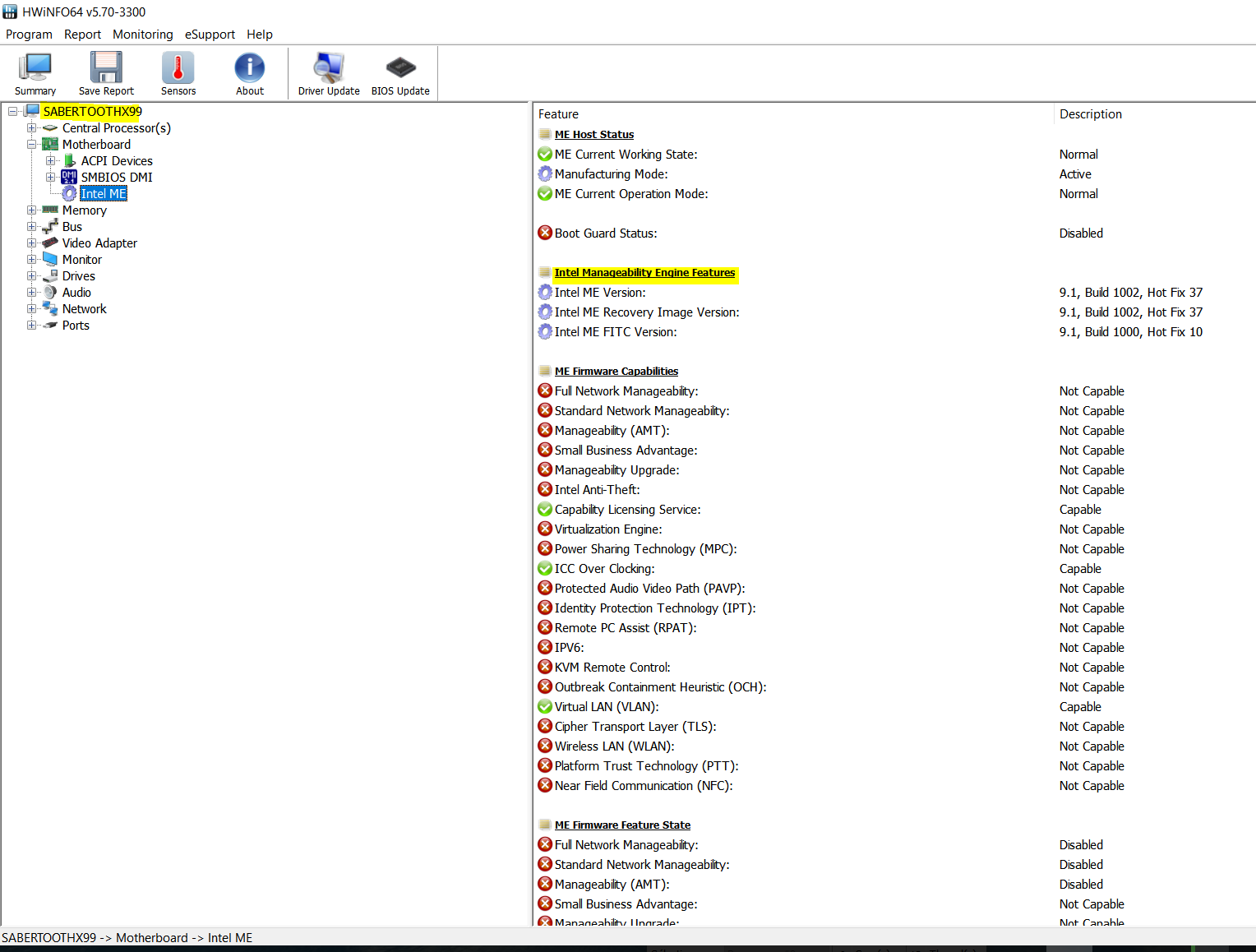I will soon do a fresh reinstall of Windows 7 OS on my X99 platform. My plan is:
A) OS phase:
01 Windows 7 SP1
02 manual updates (like SSD registry changes)
03 Windows 7 Updates
B) drivers phase:
04 basic software (like file manager, unpacker)
05 chipsets INF
06 Management Engine driver
07 Turbo Boost Max Technology 3.0 driver
08 AHCI driver
09 USB 3.0 driver
10 USB 3.1 driver
11 LAN driver
12 graphics driver
13 monitor INF
14 audio driver
15 system image backup #1
C) software phase:
16 antivirus
17 firewall
18 (any other needed software)
19 system image backup #2
Is this order ok? Will you move anything sooner/later? ![]()
@Lex :
According to my experience the “Drivers phase” should start with a look into the Device Manager for yellow flagged devices and to install the missing drivers.
When the Device Manager is “clean” (no yellow flagged devices, no missing drivers), you can start with the update of the most important drivers according to your demand.
The order of the driver installation and later on the order of the software installation usually doesn’t matter (provided, that there are no dependencies).
I know, that there are many “experts”, who recommend to install the Intel Chipset “drivers” first as the most important drivers, but they are neither drivers nor important.
@Fernando : Thank you for your opinion. ![]()
Most of these things on the list are “old” for me as I reinstalled different Windows OSes many times using this order and “nothing bad” happened so far, but I am not completely sure about two drivers as I will install them for first time and I would be happy to hear your specific opinion about them.
- Turbo Boost Max Technology 3.0 driver - I’ve never installed it so far because this is the driver for X99 platform.
- Intel Management Engine Interface driver - I’ve never installed it so far because I was always using NULL_HECISystem.inf from chipsed INF and I was not really aware I need to install anything else.
I think my planned order of installation of these two things go well with your “the Drivers phase should start with a look into the Device Manager for yellow flagged devices” sentence.
- Turbo Boost Max Technology 3.0 driver - During first OS installation on X99 I was not aware that I need this driver and had one “!” in device manager. During my searches I’ve found out that this specific driver will allow me to correct this “!”.
- Intel Management Engine Interface driver - As I was always using NULL_HECISystem.inf so I’ve never seen “!” on this device. This time I plan to not use NULL_HECISystem.inf so I should see “!” here.
So, I think, to hide all "!"s, these two drivers along with chipset INF should be installed first. The question is: in what order? Does my presented order look OK for you?
I’m still not sure what “IMEI thing” does to my system but “everyone here on this forum” recommends to install it so here it goes. But I’ve heard the opinion that it should be installed even before chipset INF, so maybe I should do that with IMEI (and maybe also with TBMT 3.0) driver/s?
@Lex :
You should better ask a Forum member like 100PIER, who has an X99 Chipset system as you and knows very much about how to configure such system perfectly.
Just address within this thread a request directly to him, and I am pretty sure, that you will get a reply.
@Lex
On my side I don’t use W7 (but W10 RS3 64bit).
I ignore what is Turbo max driver v3.0 and never seen a yellow flag about this. I have checked in ASUS Sabertooth X99 manual and did not find any reference to this ‘specific’ driver.
What kind of driver is it related ?
About MEI driver I do use Intel MEI v11.7.0.1045:
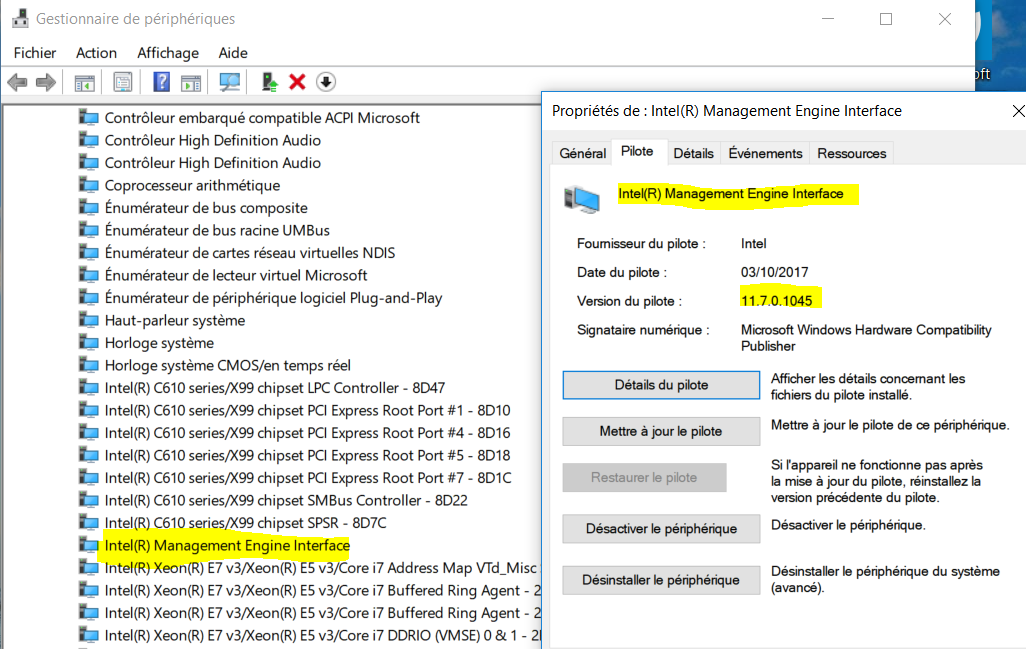
About Chipset driver I did use Intel Chipset Device Manager v10.1.2.86 package:
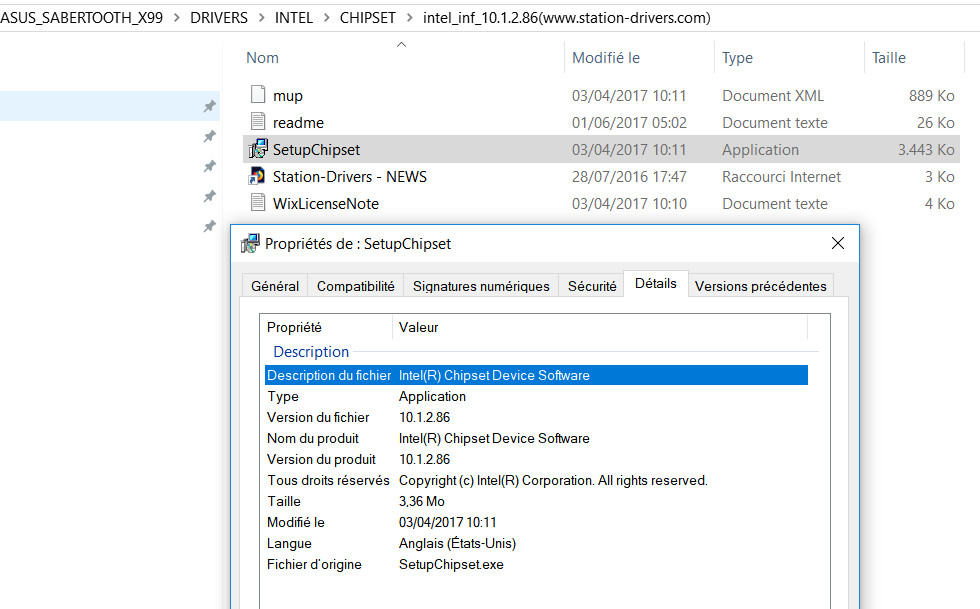
This package does install the ‘drivers’ v10.1.2.80:
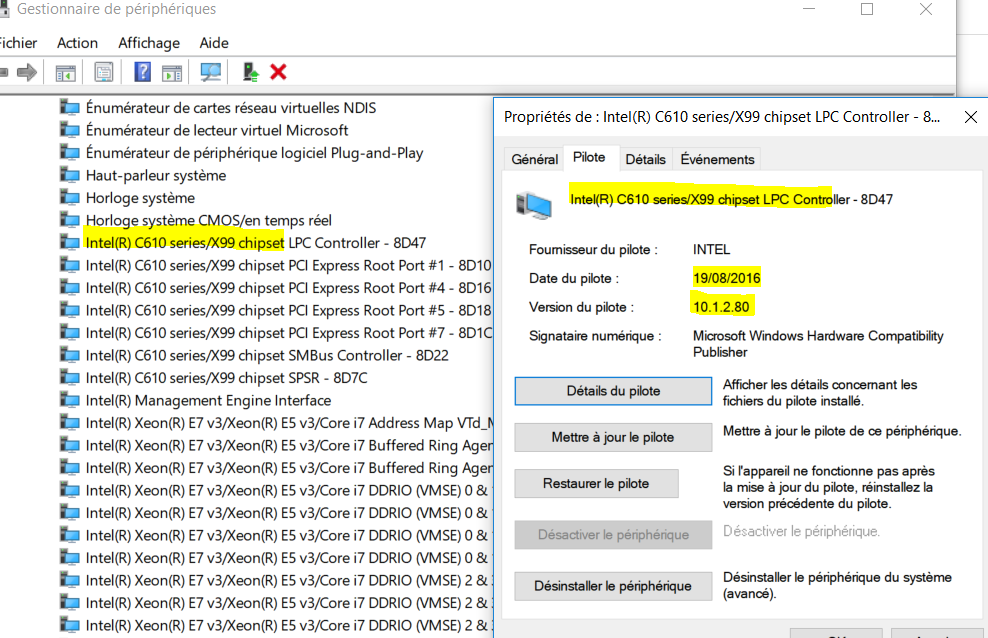
About the installation order you propose I don’t see abnomalies. The eventual yellow flags have to be fixed one after one to get a stable configuration.
May be is there another method if you try to build via NTLite tool, on a development machine, a full W7 personalised image with all ‘additional’ drivers you need so that the installation driver order is no longer questionable ? (However, as I have never done this exercise, it is only one suggestion if you get some problems with your procedure).
@100PIER : Thank you for your reply and confirmation that you can’t see any faults in my install oder. ![]()
Here is Intel webpage about this driver: https://downloadcenter.intel.com/downloa…-Technology-3-0
Latest version is v1.0.0.1033.
As I said I didn’t have it installed at first - mostly because on my ASUS mainboard downloads webpage it was "hidden" in Utilities tab. I’ve noticed that, for example, on MSI mainboards downloads page, it’s in Drivers tab instead.
This driver (after installation) is visible in device manager under:
(PC name) -> System devices -> Intel(R) Turbo Boost Max Technology 3.0 Driver
… and it is responsible for device with hardware ID ACPI\INT3510 which was still marked with "!" after fresh installation of Windows 7 with all other drivers. I suppose that Windows 10 has some driver ready out-of-the-box for this device and that’s why you can’t see any "!" yourself, but from what I read this driver is needed to be installed on X99/X299 platforms.
Can you explain to me using "simple words" what does this "IMEI thing" exactly do? ![]()
Can you explain to me using “simple words” what does this “IMEI thing” exactly do? ![]()
Contrary to the NULL_HECISystem.inf file it is a real driver (= *.SYS file), which manages the function of the device named “Intel(R) Management Engine Interface”.
@Lex
Thanks for infos about Intel Turbo Boost Technology v3.0.
It is related to some Intel CPUS/chipset:
Intel® Core™ i7-69xx/68xx processor family for socket LGA 2011_-v3 (single socket only)
Intel® Xeon® E5-1600 v4 product family (single socket only)
Intel® Core™ i9-7920X/i9-7900X/i7-78XX processor family for socket LGA 2066 with X299 chipset.
My CPU i7-5930K does not supported this feature, this is the reason why I have no TBT trace into Device Manager, System Device.
About what does Intel MEI do exactly I think the start post here gives details: here
@100PIER : Yes, I know the topic you linked but IMEI is still “secret technology” for me. If it’s “so important” why it has its own “empty driver” (included in chipset INF)? Chipset INF should not “cure” yellow “!” of IMEI device and this way will force people to install proper IMEI driver instead.
Anyway. after more reading I decided to change installation order of Management Engine and Turbo Boost Max Technology 3.0 drivers: I will install IMEI driver before TBMT one.
@100PIER : I have the same Intel ME firmware version as yours, 9.1.37.1002, and my FITC version is also 9.1.10.1000.
Shouldn’t they be somehow upgraded to v11 to properly use these IMEI v11.7.0.1045 drivers?
Also, I’ve heard a lot about Intel ME vulnerabilities…
@Lex
1) About Intel ME vulnerabilities you should use the Intel Detection Tool as I have done:
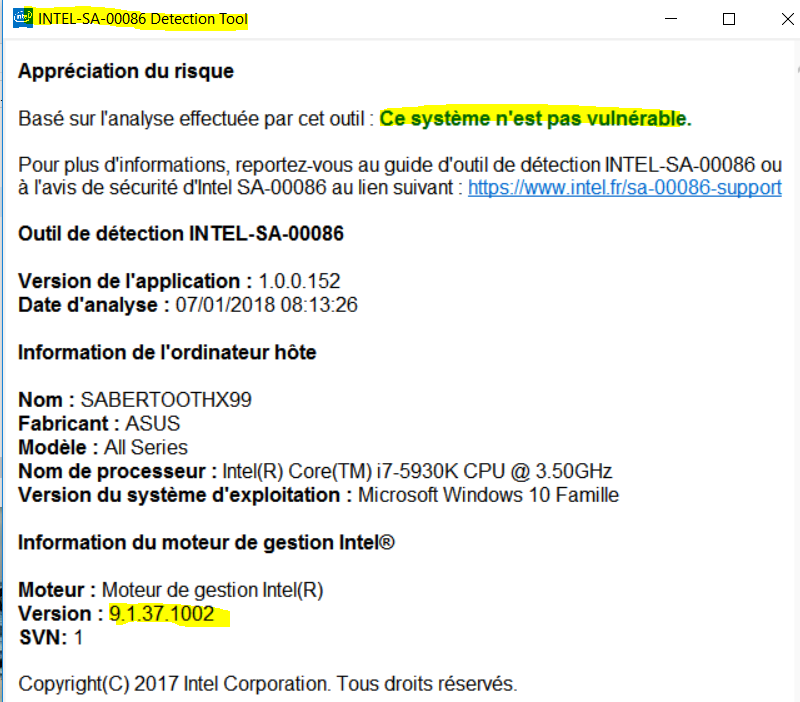
2) Absolutely no, you should remain to run IMEI v11.7.0.1045 drivers with the MEI Firmware version v9.1 branch. This is due to the motherboard hardware design.
Just want to point out that the TBMT driver is required for 7 thru 10 RS2,
it is not required for RS3 and later.
I have no kind of expertise in this, but for what it’s worth, I did recently have a missing driver error while working with NTLite with a Win10 22H2 host and target:
oem1.inf - Error 0x80070002 - [2] The system cannot find the file specified.
The source was intelnit.cat, and the driver info:
Hardware IDs, ACPI\VEN_INT&DEV_3510, ACPI\INT3510, *INT3510
Parent instance ID, ACPI_HAL\PNP0C08\0
Instance ID, ACPI\INT3510\2&DABA3FF&0
Location paths, ACPI(SB)#ACPI(INTS)
BIOS name, _SB.INTS
Container ID, {00000000-0000-0000-ffff-ffffffffffff}
ITBM.EXE | DriverVer=04/21/2016, 1.0.0.1025 | %INTELNIT.DeviceDesc% = IntelTurboBoostMax,ACPI\INT3510 | Intel(R) Turbo Boost Max Technology 3.0 Driver
As I had saved driver files from prior OS hosts, it was resolved (without installing the ITBM.exe) by rtclick/install on intelnit.inf after ensuring that intelnit.inf, intelnit.cat, and IntelNit.sys (and no other files) were all inside one folder.
